India
The Need of the Hour: Annamalai Defends BJP’s Three-Language Policy

Contents
Introduction to the Three-Language Policy
The Bharatiya Janata Party (BJP) has proposed a Three-Language Policy with the intent of fostering linguistic diversity and improving communication skills across the Indian populace. This policy emphasizes the learning and usage of three languages: the mother tongue, Hindi, and English. The trio of languages caters to the linguistic demographics of India, a country characterized by its rich tapestry of languages and cultures.
The primary objective of the Three-Language Policy is to ensure that students in India acquire proficiency in multiple languages, thereby enhancing their cognitive abilities and job prospects. The policy advocates for the promotion of regional languages while simultaneously advocating for Hindi and English, which are deemed essential for national integration and global competitiveness. By supporting the learning of diverse languages, the intended benefit is to foster a more cohesive society where individuals can communicate effectively across various regions and cultures.
The rationale behind introducing this policy lies in the recognition that language is a critical element of identity and plays a significant role in education, business, and social interaction. The BJP argues that a multilingual approach is necessary in a nation as diverse as India. This approach not only respects the linguistic backgrounds of its citizens but also prepares them for a globalized world where multilingual communication is increasingly valued.
In an era of globalization, the ability to communicate in multiple languages is an asset. The Three-Language Policy aspires to equip future generations with the linguistic tools required to navigate both national and international spheres. By fostering linguistic proficiency, the BJP aims to bridge communication gaps, enhance mutual understanding, and ultimately contribute to the socio-economic development of the country. The successful implementation of this policy may play a crucial role in shaping a more linguistically skilled and united Indian society.
A Brief Background on Annamalai’s Political Stance
T. Annamalai, a significant figure within the Bharatiya Janata Party (BJP), has carved a distinct path in Indian politics. His journey commenced as an officer in the Indian Police Service (IPS), where he displayed remarkable leadership and commitment to public service. After transitioning from law enforcement to politics, Annamalai emerged as a vocal advocate for the BJP’s objectives, positioning himself as a proponent of education and social reform.

Throughout his career, Annamalai has consistently emphasized the importance of inclusive education, arguing that it is vital for national integration and social harmony. His clear communication and dedication to the BJP’s vision have garnered him substantial support among party ranks as well as among the public. Annamalai’s stance on the three-language policy is particularly noteworthy; he wholeheartedly believes that it promotes linguistic diversity while ensuring that citizens are well-equipped in multiple languages, fostering a sense of belonging and opportunity across various regions of India.
Annamalai’s previous roles as the State President of BJP in Tamil Nadu provided him with a platform to influence the party’s approach to educational reforms. His messages often resonate with the youth, addressing their aspirations and the necessity for a robust educational framework that encompasses multiple languages. This framework aims to not only retain cultural identity but also encourage educational and economic mobility among various demographics.
In articulating his support for the three-language policy, Annamalai underscores its potential to bridge the gap between various linguistic communities in India. The policy, which emphasizes proficiency in the mother tongue alongside Hindi and English, aligns with his convictions about promoting inclusivity and maximizing the accessibility of education. With a focus on equitable learning, Annamalai continues to advocate for educational initiatives that reflect the aspirations and needs of all citizens.
The Debate Surrounding the Three-Language Policy
The three-language policy, proposed by the Indian government, has sparked considerable debate among political figures, educators, and the general public. Proponents argue that this policy fosters national integration and develops a common linguistic framework essential for mobility and economic opportunities. Advocates see the inclusion of Hindi, English, and a regional language as a way to encourage cultural exchange and understanding across India’s diverse linguistic landscape. According to supporters, learning multiple languages enhances cognitive skills and prepares students for a competitive global environment.
However, opposition to the three-language policy is significant and multifaceted. Critics express concern that the mandate may undermine the prominence of regional languages, potentially leading to their decline. Many argue that a compulsory third language could be seen as an imposition on states that pride themselves on their local languages and cultures. Prominent politicians from various regional parties have voiced strong objections, labeling the policy as an attempt to impose Hindi as a dominant language across the nation. Educational experts emphasize that language should be optional, suggesting that students should have the freedom to choose their preferred language of instruction, which could align more closely with their cultural identity.
The debate highlights a crucial issue: the balance between national cohesion and respect for regional diversity. While the government champions the three-language policy as a tool for unity, many feel that it risks alienating local communities. The discussions surrounding this policy reflect broader concerns regarding linguistic rights and the future of regional languages in India. As stakeholders continue to express their views, the government is urged to reassess its approach to ensure inclusivity and recognize the profound value of India’s linguistic heritage.
Annamalai’s Arguments in Defense of the Policy
In support of the three-language policy, Annamalai emphasizes the critical role that multilingualism plays in fostering educational empowerment. By promoting proficiency in multiple languages, students gain access to a wider range of educational resources, enhancing their learning experience. This approach not only enriches knowledge acquisition but also equips learners with essential communication skills that are increasingly valued in today’s globalized workforce. Proponents of the policy argue that linguistic diversity contributes significantly to cognitive development, helping students think critically and adaptively.
Moreover, Annamalai highlights the importance of national integration through a shared linguistic framework. He asserts that learning multiple languages cultivates a sense of unity among citizens from different cultural backgrounds. By being proficient in Hindi, English, and the regional language, students can interact seamlessly across various linguistic and cultural boundaries. This interconnectedness, according to Annamalai, is essential for building a cohesive society that respects and values its diverse heritage while working towards common national objectives.
Another key aspect of Annamalai’s defense is the emphasis on skill development. In an era where the job market is increasingly demanding, multilingual individuals possess a competitive advantage. They are more adaptable and better positioned to engage with international markets and multicultural environments. The three-language policy aims to prepare the younger generation not just for domestic opportunities, but also for global challenges. Annamalai addresses critics who argue that such a policy may dilute the prominence of regional languages by underscoring that the initiative is designed to complement, rather than replace, existing linguistic frameworks. This balanced approach affirms the value of regional languages while enhancing broader communication skills.
Impact on Educational Institutions
The implementation of the three-language policy proposed by Annamalai has significant implications for educational institutions across India. This initiative aims to promote multilingualism, thereby necessitating a comprehensive review of current curriculum frameworks in schools. Educational institutions will be faced with the challenge of incorporating three languages—often the regional language, Hindi, and English—into their existing syllabi. This requires not only a restructured curriculum but also an updated approach to teaching methodologies that reflect a multilingual academic environment.
Teacher training will be a critical factor in successfully executing this policy. Educators will need to develop proficiency in all three languages to effectively teach their students. Consequently, professional development programs might need to be established, focusing on language acquisition and pedagogical strategies. Additionally, institutions may require recruitment of new educators who specialize in various languages, thus addressing potential gaps in teaching staff proficiency.
Moreover, the effective implementation of the three-language policy will necessitate significant investments in resources. Schools would need to procure a wide range of educational materials, including textbooks and digital content, that align with the tri-linguistic approach. Access to language labs and technology-integrated classrooms may also become imperative to engage students in immersive language experiences. However, schools may encounter challenges such as budget constraints, especially in underfunded and rural areas. The disparity in resource allocation could lead to variances in the policy’s effectiveness across different regions, eventually affecting student outcomes and proficiency levels.
In summary, the three-language policy proposed by Annamalai has the potential to redefine educational norms in India, necessitating extensive restructuring of curricula, enhanced teacher training programs, and significant resource allocation to facilitate a smooth transition. The commitment to multilingual education could yield lasting benefits for students, equipping them with essential skills in an increasingly globalized world.
Potential Benefits for Students
The implementation of a three-language policy in education has the potential to yield significant benefits for students, fostering not only academic growth but also personal development. By encouraging multilingualism, this policy enhances cognitive skills, allowing students to develop better problem-solving abilities and critical thinking. Research has consistently shown that students who engage with multiple languages tend to outperform their monolingual peers in various cognitive tasks, including improved memory and greater mental flexibility. Such skills are essential in today’s fast-paced, globally interconnected environment.
Furthermore, proficiency in multiple languages can significantly enhance job prospects for students upon entering the workforce. Employers in various sectors often seek individuals who can navigate multicultural environments and communicate effectively with diverse clientele. The ability to speak more than one language can set candidates apart in competitive job markets, contributing to higher employability and the potential for better salary packages. As industries continue to globalize, the demand for multilingual professionals is likely to increase, making proficiency a valuable asset.
Additionally, the three-language policy fosters a stronger appreciation for linguistic diversity. Students exposed to different languages are more likely to develop cultural sensitivity and empathy toward individuals from disparate backgrounds. This exposure can lead to improved intercultural communication skills, paving the way for healthier interpersonal relationships and stronger community ties. Successful case studies from various educational institutions across the globe demonstrate how multilingual education cultivates an environment of inclusivity and respect for multiple cultures, enriching the education experience.
Incorporating a three-language policy not only addresses academic requirements but also aligns with broader societal goals of enhancing cognitive abilities, improving career opportunities, and promoting cultural appreciation. By doing so, students emerge as well-rounded individuals prepared to meet the challenges of a diverse world.
Challenges and Concerns Raised by Critics
The three-language policy proposed by the BJP has faced substantial criticism from various quarters, reflecting a complex landscape of regional sentiments and educational challenges. One of the primary concerns articulated by opponents is the potential marginalization of regional languages. Critics argue that imposing a three-language regimen might inadvertently foster a hierarchy that elevates Hindi and English over indigenous languages, thereby jeopardizing their usage and cultural significance. This could lead to a dilution of linguistic diversity, which is integral to India’s rich heritage.
Moreover, implementation challenges have been prominently raised. The successful execution of the three-language policy requires coordination among diverse educational boards across states—a task that is not only daunting but complex. States have unique linguistic demographics, and a one-size-fits-all approach may not resonate with the local populace. Critics emphasize that without adequate infrastructure, teacher training, and resources, the objectives of the policy could remain unattained, leading to ineffective educational outcomes.
Resistance from certain states adds another layer of complexity to this policy. For instance, southern states have expressed strong opposition, stating that the imposition of Hindi could undermine their regional languages which serve as vital components of identity and culture. This resistance points to a larger discourse on linguistic rights and highlights the potential for regional discontent, which could manifest in unrest or political pushback. Addressing these challenges is crucial for formulating a well-rounded policy that respects linguistic diversity while promoting unity.
In light of these critiques, it is essential for policymakers to engage in meaningful dialogue with stakeholders at all levels. This will help in devising a balanced three-language policy that not only serves national interests but also honors the linguistic aspirations of all Indian citizens.
The Role of the Central Government in Implementation
The implementation of the three-language policy necessitates a proactive approach by the central government to ensure its success across various states in India. One of the primary responsibilities of the central government is to allocate adequate funding to facilitate the development of necessary educational infrastructure and resources. This funding plays a critical role in training teachers, developing curricula, and providing learning materials that align with the three-language framework. By securing financial support, the government can greatly enhance the quality of education imparted in different languages, encouraging proficiency and alignment with regional linguistic diversity.
In addition to funding, coordination between the central government and state governments is essential. Each state has its unique linguistic and cultural landscape, which must be respected and integrated into the implementation of the three-language policy. The central government should actively engage with state authorities to create a tailored educational model that meets local needs while adhering to the national framework. This collaboration can lead to more effective execution, as it enables states to adapt the policy according to their specific demographic and linguistic profiles, thereby fostering inclusion.
Furthermore, the creation of an inclusive framework is vital. The central government must ensure that the three-language policy is not just a bureaucratic initiative but a comprehensive approach that considers the diverse societal fabric of the country. This includes acknowledging and accommodating regional dialects and lesser-known languages, thus promoting multilingualism in educational settings. By shaping an inclusive policy, the central government can facilitate an environment where students appreciate linguistic diversity and value their mother tongues while also learning national and foreign languages. Such an approach is essential for fostering a cohesive national identity while respecting regional identities.
Summary: A Path Forward for Multilingual Education
The discussion surrounding Annamalai’s defense of the BJP’s three-language policy emphasizes the importance of multilingual education in India. This policy aims to foster linguistic diversity while equipping students with the language skills necessary for a globalized world. The implementation of such a policy necessitates careful consideration and collaboration among all stakeholders, including educators, policymakers, and communities. It is essential to ensure that the nuances of regional languages and cultures are respected and integrated into the educational framework.
As we navigate the challenges and opportunities presented by multilingual education, adaptability will be key. Educational approaches must evolve to meet the needs of a diverse student population. This may involve incorporating technology, innovative teaching methods, and culturally relevant materials that resonate with students. Flexibility in the implementation of the three-language policy will empower schools to create an environment where students can thrive linguistically and academically.
Moreover, fostering a sense of linguistic harmony is critical for social cohesion in a country as linguistically varied as India. Encouraging respect for different languages and cultures can lead to greater understanding and cooperation among communities. The dialogue surrounding the three-language policy serves as a platform for addressing misconceptions and building a shared vision for the future of education in India.
Also read : Kejriwal’s ‘Sheesh Mahal’ Under Scrutiny: BJP Calls for Probe into Lavish Renovations
In conclusion, the future of multilingual education relies on open discussions that consider the aspirations of all stakeholders. By committing to an inclusive and progressive approach, multilingual education can play a pivotal role in shaping a unified yet diverse India, where students can successfully navigate a multicultural landscape. It is through continued engagement and collaboration that we can hope to achieve the objectives of this vital educational initiative.
Accident
CM Rekha Gupta Orders Probe into Building Collapse in North-East Delhi, DM to Submit Detailed Report
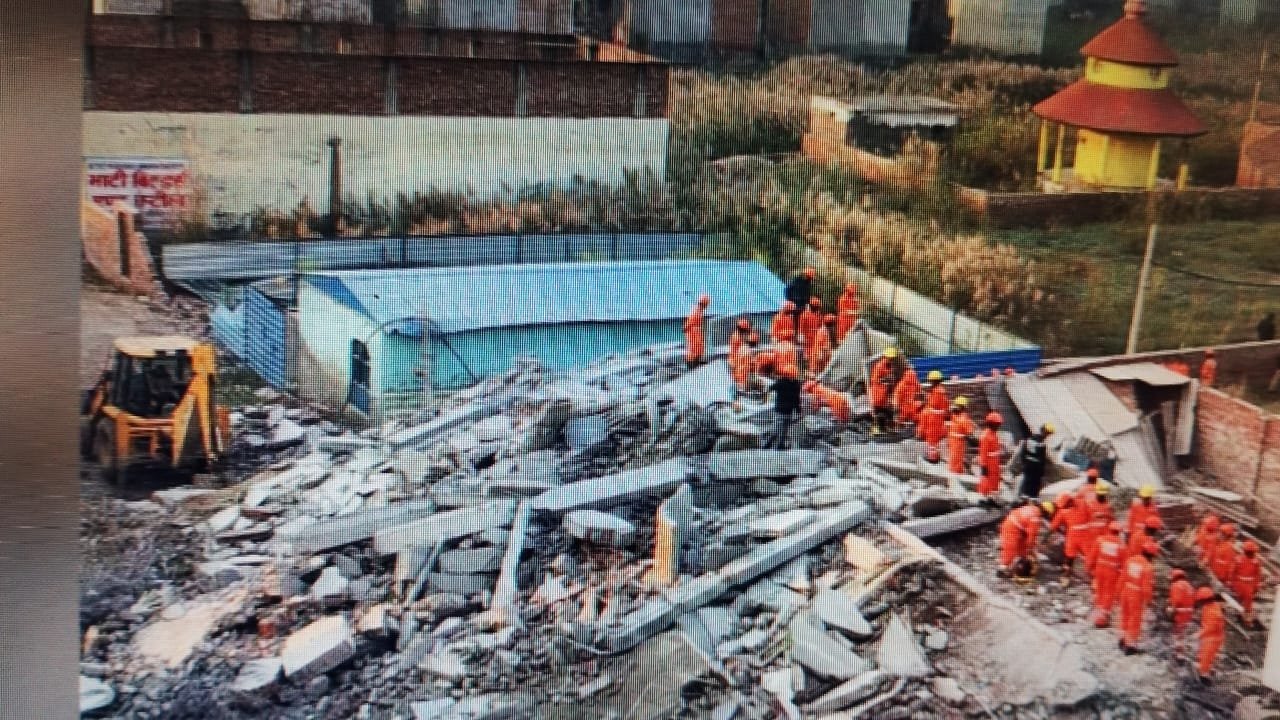
Contents
New Delhi, July 12, 2025
A tragic building collapse in the Karawal Nagar area of North-East Delhi on Saturday sent shockwaves through the region. The multi-storey structure crumbled suddenly, leaving several people injured, while a few are still feared trapped under the debris. Rescue and relief operations are currently underway at full speed.
Taking immediate note of the incident, Delhi Chief Minister Rekha Gupta has ordered a high-level investigation and directed the District Magistrate (DM) to submit a detailed report within 48 hours. Speaking to the media, she said, “Strict action will be taken against anyone found responsible for this tragedy. There can be no compromise when it comes to public safety.”
Administration Swift in Relief Operations
Teams from the NDRF and Fire Department reached the site promptly and are working tirelessly to clear the rubble. According to local residents, the building had visible cracks for quite some time, but no significant action was taken in advance.
Questions Raised Over Illegal Constructions
This incident has once again raised serious concerns about unauthorized constructions and alleged corruption in the building permit system in Delhi. The Chief Minister emphasized the need for stricter ground-level enforcement. “It’s time for the administration to act firmly against illegal structures and ensure accountability at the ward level,” she asserted.
Support and Compensation for Victims
The Delhi government has announced that it will bear the full cost of treatment for those injured in the incident. Compensation procedures for the families of the deceased have also begun. CM Rekha Gupta personally visited the hospital to meet the injured and instructed doctors to provide special care.
India
Wave of Employment Across India: Job Fairs Held in 47 Cities, 51,000 Youths Receive Appointment Letters
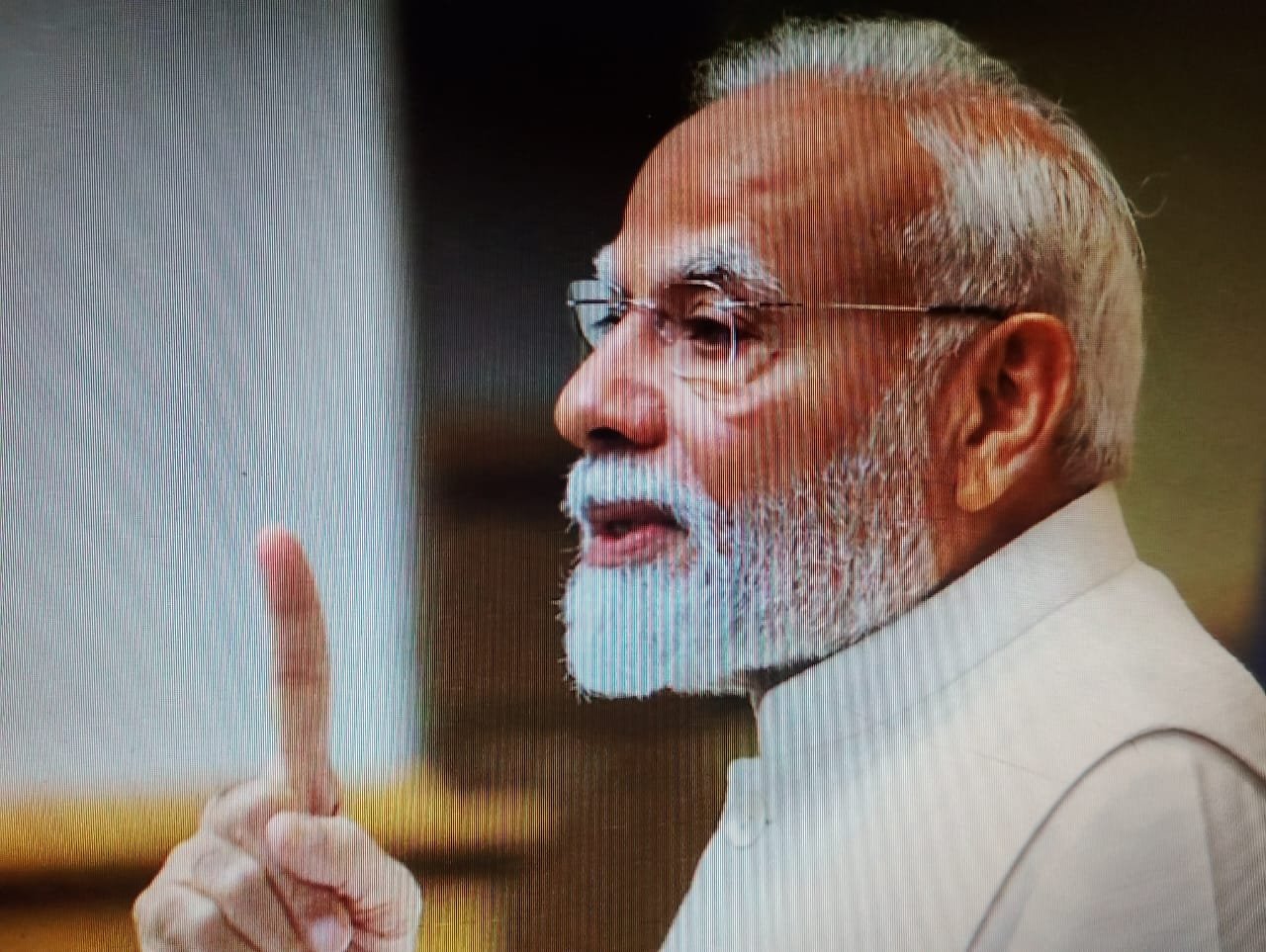
Contents
New Delhi, July 12, 2025
Saturday morning brought new hope for the youth of India as Prime Minister Narendra Modi, through video conferencing, virtually participated in employment fairs held across 47 cities and distributed over 51,000 appointment letters to newly selected candidates. These weren’t just ordinary documents—they symbolized the first step toward the dreams of thousands of young Indians, ready to build their own future.
“No Recommendations, No Bribes” — Jobs Now Based Solely on Merit
Addressing the event, Prime Minister Modi emphasized the government’s commitment to a transparent, fair, and efficient recruitment process.
“Today, jobs in India are no longer handed out through influence or favors, but through talent. This is the identity of the New India,” said PM Modi.
He further reiterated that young aspirants no longer need backing or bribes to secure government jobs. The government’s “No Recommendation, No Expense” initiative reflects this very principle.
Confidence Shines on Young Faces
One of the selected candidates from Jaipur, Rajasthan, Miss. Sharma, shared her experience with visible emotion:
“I never thought I’d get a government job without any connections or under-the-table payments. This government has made that possible. I can now see the dreams of my family shining in their eyes—and mine.”
Youth Power Will Build the Nation
The Prime Minister urged the newly recruited youth to treat their roles not just as jobs, but as opportunities for nation-building.
- “Wherever you are posted, your dedication and work ethic will shape the future of the country,” he said.
Art
Orange Day Adds a Splash of Joy at DAV Centenary Public School, Jaipur
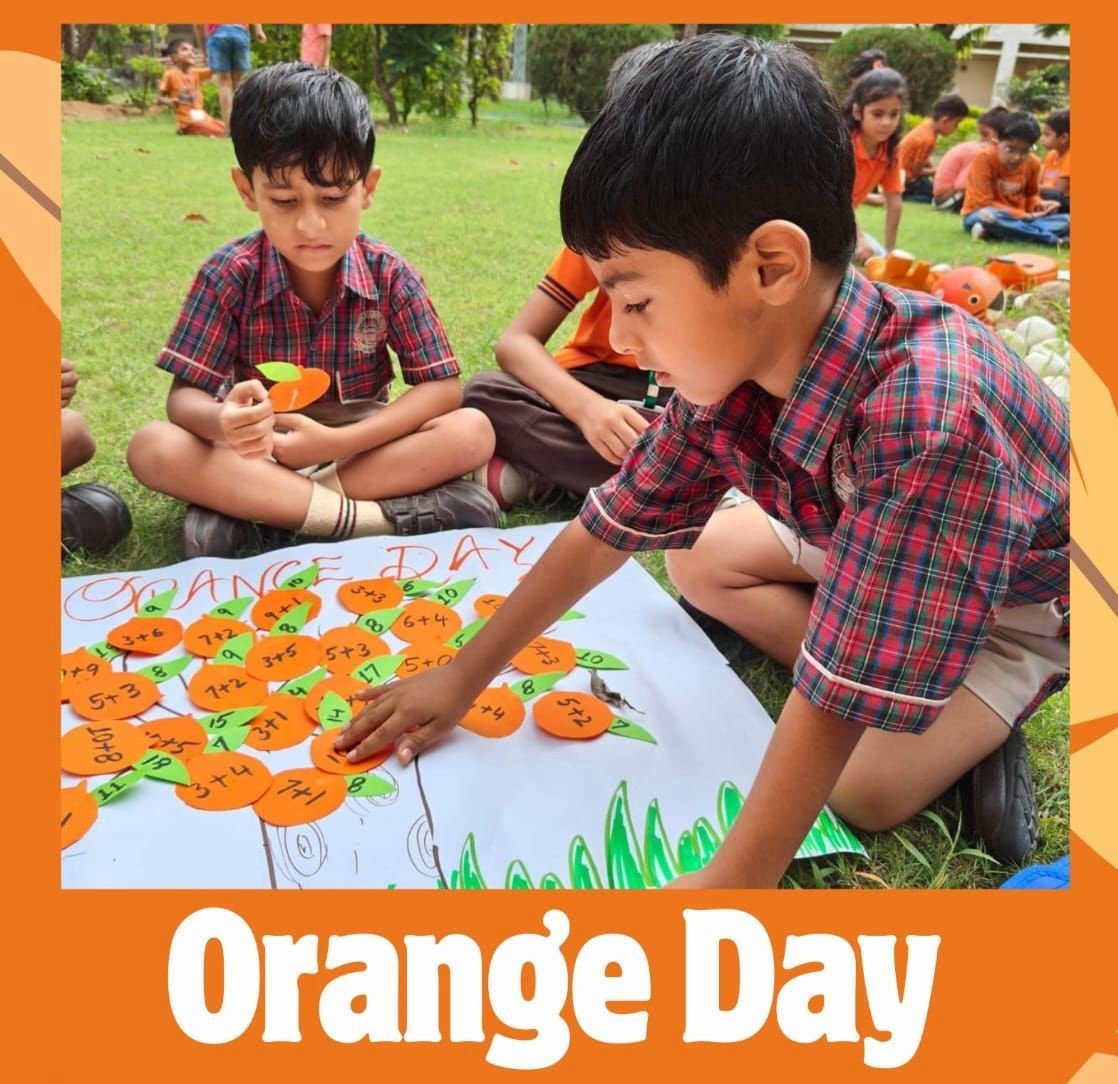
Jaipur, July 10, 2025
The tiny tots of DAV Centenary Public School, Jaipur lit up the campus as they came dressed in cheerful shades of orange to celebrate Orange Day with great excitement and enthusiasm.
The pre-primary wing turned into a lively sea of orange—from clothes and accessories to creative decorations—all reflecting the spirit of joy, creativity, and energy that the colour symbolizes. Teachers thoughtfully planned the day to help children not just enjoy, but also learn the meaning behind the colour orange—a symbol of hope, enthusiasm, and prosperity.
The classrooms were buzzing with laughter and activity as the little learners took part in various fun-filled games, storytelling, drawing, and creative expression sessions. To boost their communication skills, each child was encouraged to bring an orange-coloured object from home and speak a few lines about it in front of their classmates. For many, it was their first public speaking moment, and they did it with adorable confidence.
Principal Mr. A.K. Sharma visited the classrooms to cheer on the children. He appreciated the thoughtful planning of the teachers and said, “Activities like these help children build confidence, express themselves freely, and connect learning with real-life experiences.”
It was a delightful sight to watch the little ones bursting with curiosity, dressed in glowing orange, exploring and expressing themselves. The day left behind not just smiles and laughter, but also a colourful memory in the hearts of the young students.
Accident
Vadodara Bridge Tragedy: Death Toll Rises to 19, Two Still Missing – Rescue Operations Continue in Mahisagar River
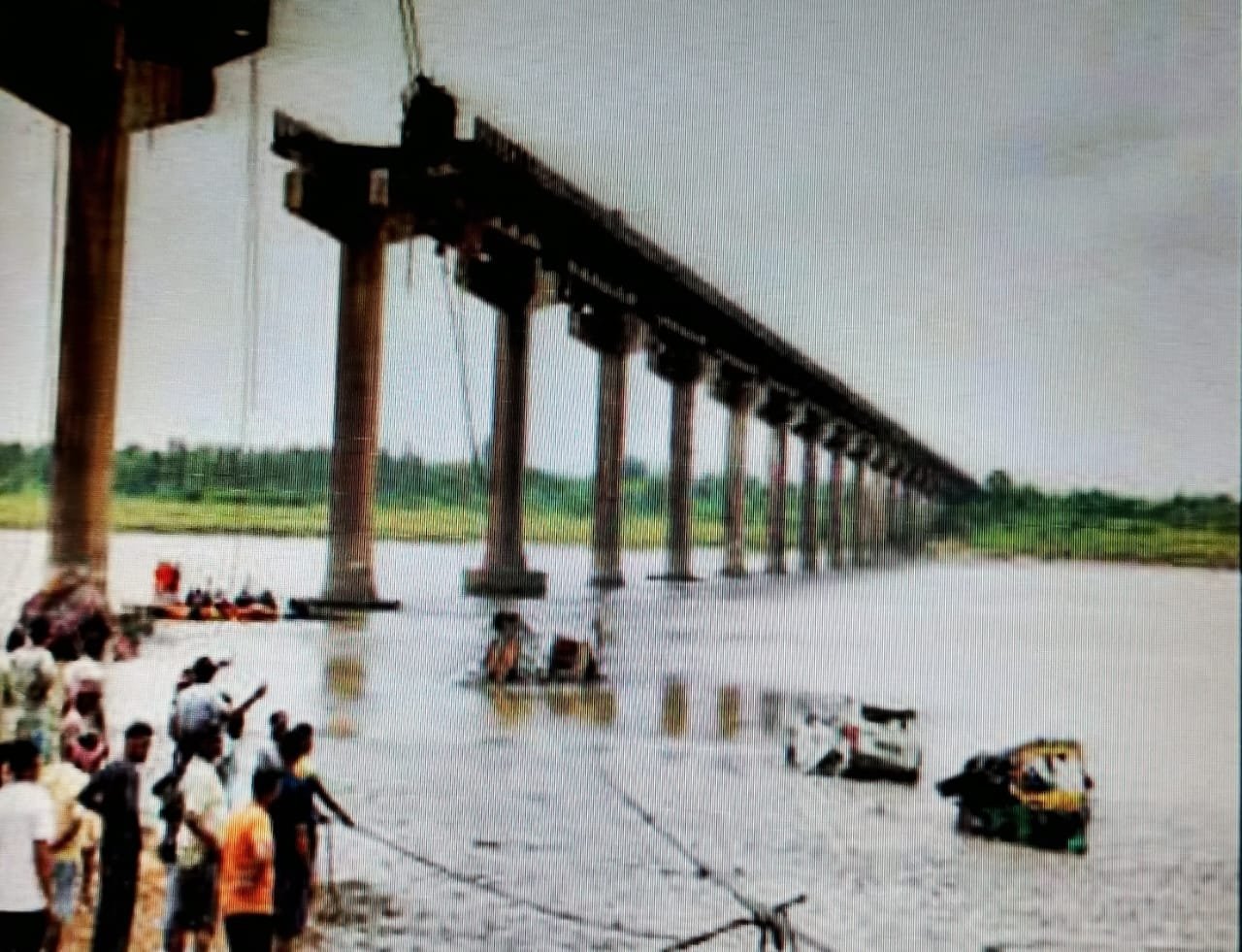
Contents
Vadodara (Gujarat), July 11, 2025
A heart-wrenching incident has shaken Gujarat as the Gambhira–Mujpur bridge over the Mahisagar River in Vadodara district collapsed unexpectedly. So far, 19 people have lost their lives, while 2 individuals remain missing. Rescue teams have been relentlessly working for the third consecutive day in the hope of saving lives and retrieving the missing.
How Did the Tragedy Happen?
The incident occurred on the morning of July 9, when several vehicles were crossing the bridge. Suddenly, a major section of the bridge collapsed into the river, dragging with it two trucks, an SUV, a pickup van, an auto-rickshaw, and two motorcycles. The bridge was nearly 40 years old, and multiple complaints had been made about its deteriorating condition.
Victims Identified, Families Devastated
So far, 18 bodies have been recovered from the debris, while one critically injured person succumbed to injuries at the hospital, taking the total death toll to 19. Among the victims were women, children, and entire families who were out on a pilgrimage for Guru Purnima.
Search Operations Still Underway
Rescue efforts by NDRF, SDRF, and fire brigade teams are still ongoing. The operation is facing major challenges due to the river’s depth, strong current, and over 10 feet of thick mud, making it difficult to access submerged vehicles. Cranes, boats, and divers are being deployed to find the two missing persons.
Government Response and Action
In the wake of the incident, the state government swiftly suspended four engineers and has ordered a detailed investigation into the bridge collapse. The government has also announced financial compensation of ₹2 lakh to the families of the deceased and ₹50,000 for the injured.
Public Outrage and Unanswered Questions
Local residents claim the bridge was already in a dangerous condition, but authorities failed to take timely action. Media reports reveal that just days before the tragedy, a journalist had posted a video highlighting the poor state of the bridge, which went ignored.
This incident has once again exposed the negligence and oversight in maintaining public infrastructure. Behind every number is a grieving family – a shattered home, a mother who lost her child, a father never to return. The need of the hour is strict accountability, immediate structural audits, and long-term corrective measures — so that such a tragedy never repeats itself.
Education
Guru Purnima Celebration at DAV CPS, Jaipur – A Heartfelt Tribute to Guiding Lights
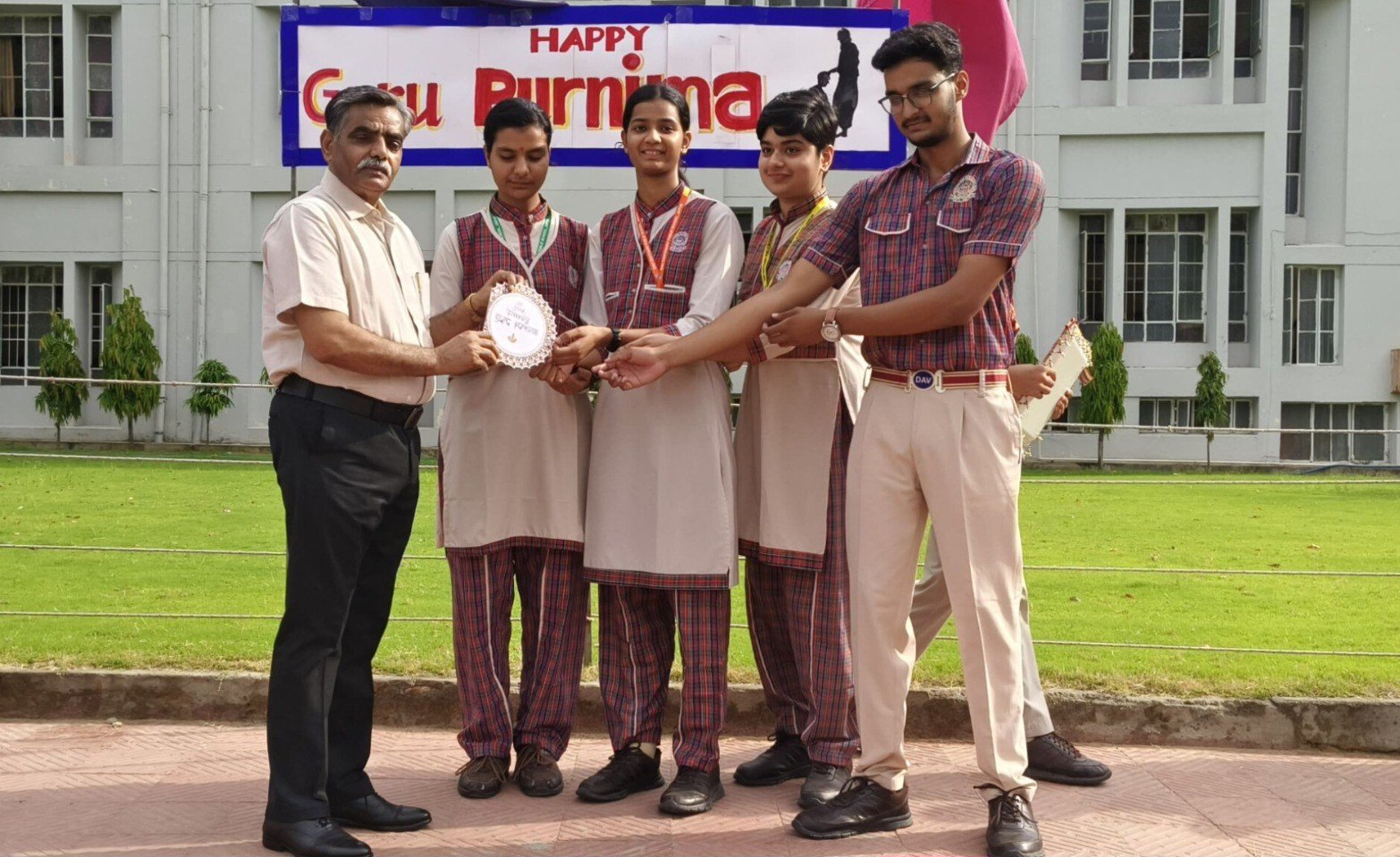
Jaipur | July 10, 2025
In an atmosphere filled with devotion, gratitude, and inspiration, DAV Centenary Public School, Vaishali Nagar, Jaipur celebrated Guru Purnima with heartfelt enthusiasm on Thursday, July 10. The event turned out to be more than just a celebration—it was a beautiful expression of love and respect for the teachers who illuminate the path of learning for their students.
The morning assembly set the tone for the day with the soothing sounds of shlokas dedicated to gurus, creating a spiritually charged environment across the campus. The essence of the celebration was beautifully captured in a speech that explained the cultural and historical roots of Guru Purnima, reminding everyone of the powerful legacy of the guru-shishya tradition.
Students poured their hearts out through soulful poems, melodious songs, and inspiring speeches, each echoing a shared sentiment—deep respect for their mentors. A mesmerizing classical dance performance, portraying devotion and reverence towards gurus, stole the spotlight and left the audience spellbound.
One of the most touching moments of the day was when the students presented a handmade gratitude card to Principal Mr. A.K. Sharma, who has been a constant source of wisdom and encouragement. In his address, Mr. Sharma reflected on the irreplaceable role of teachers in shaping young minds and urged students to stay rooted in values, discipline, and lifelong learning.
“The presence of a guru in one’s life is a blessing,” he said. “True success comes not just from knowledge, but from the humility to keep learning.”
The event concluded on a thoughtful note, leaving everyone—teachers, students, and staff—feeling more connected, more thankful, and more inspired. Guru Purnima at DAV CPS was not just an event, but an experience that reminded all of the timeless role of a teacher—not just in the classroom, but in life.
Crime
Indian Nurse to Be Hanged in 6 Days in Yemen — The Heartbreaking Story of Nimisha Priya, Who Gave Her Partner a Sedative That Turned Deadly
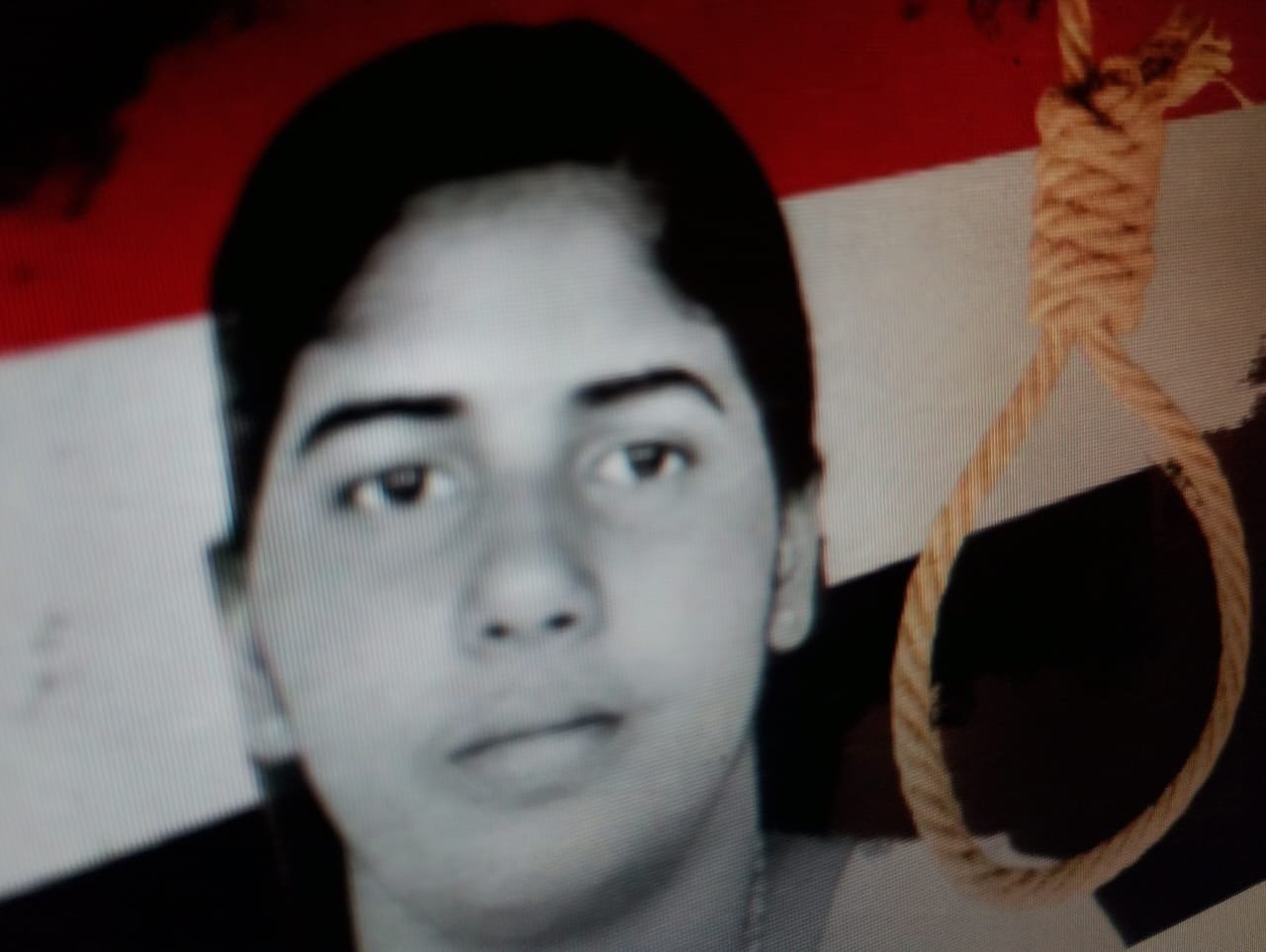
Contents
Thiruvananthapuram / Yemen | July11, 2025
Once a hopeful young nurse from Kerala, Nimisha Priya is now counting her final days in a Yemeni prison. Her crime — administering a sedative that led to the death of her Yemeni business partner, Alkhader Al-Omari. Her punishment — execution by hanging on July 13, 2025.
But behind this grim sentence lies a story much more complicated — one filled with ambition, control, fear, and a moment that changed everything.
A Nurse with Dreams, and a New Life Abroad
Nimisha Priya wasn’t a criminal when she left India. She was a caregiver — a skilled nurse with dreams of building a better life. In Yemen, she found work, opened a clinic, and partnered with Alkhader Al-Omari, a local man who helped her navigate the foreign land.
But what started as a partnership slowly turned into a prison.
Trapped in a Toxic Relationship
Reports from the time suggest that Al-Omari soon took control of more than just the clinic. He allegedly confiscated Nimisha’s passport, isolated her, and began mentally and physically abusing her. He took over her earnings and threatened her when she talked about returning home to India.
Far from family, friends, or legal protection, Nimisha felt completely trapped — her life and freedom in the hands of a man who, she believed, would never let her go.
The Night It All Changed
Then came that fateful night in 2017.
According to court documents, Nimisha gave Al-Omari a high dose of a sedative. Her stated intention was not to kill him, but to make him unconscious, retrieve her passport, and escape. But the sedative proved too strong — Al-Omari died.
Panic set in. Nimisha reportedly dismembered his body and tried to hide the evidence in a water tank. A gruesome and desperate act that, once discovered, left her no room to explain.
A Death Sentence, and a Race Against Time
The Yemeni court ruled the act pre-meditated murder and sentenced Nimisha to death by hanging.
For years, legal teams in India and Yemen pleaded for clemency. Activists pointed to the abuse she suffered, to the desperation of a woman with no escape, and to her otherwise clean record. Her mother, in tears, begged the Yemeni family for forgiveness, hoping for a “Diya” — blood money — a custom in Yemen that allows the victim’s family to pardon the accused.
But that pardon never came.
Only Six Days Left…
Today, Nimisha Priya is a prisoner not just behind bars, but in time. With just six days left, she awaits her execution. Her mother is still trying — hoping against hope — for one final miracle.
Meanwhile, millions in India are asking:
Was she a murderer? Or a victim of circumstance, trying to survive in a world where no one came to help?
Beyond the Verdict
This is not just Nimisha’s story. It’s the story of thousands of Indian women who work abroad, often with little protection. It’s the story of how desperation can drive someone to the edge, and how the law — especially in foreign lands — rarely leaves room for the grey in between.
Crime
India’s Biggest Scam You Never Heard Enough About — ₹49,000 Crore Vanished, 5 Crore Lives Shattered, And Now… One Big Arrest
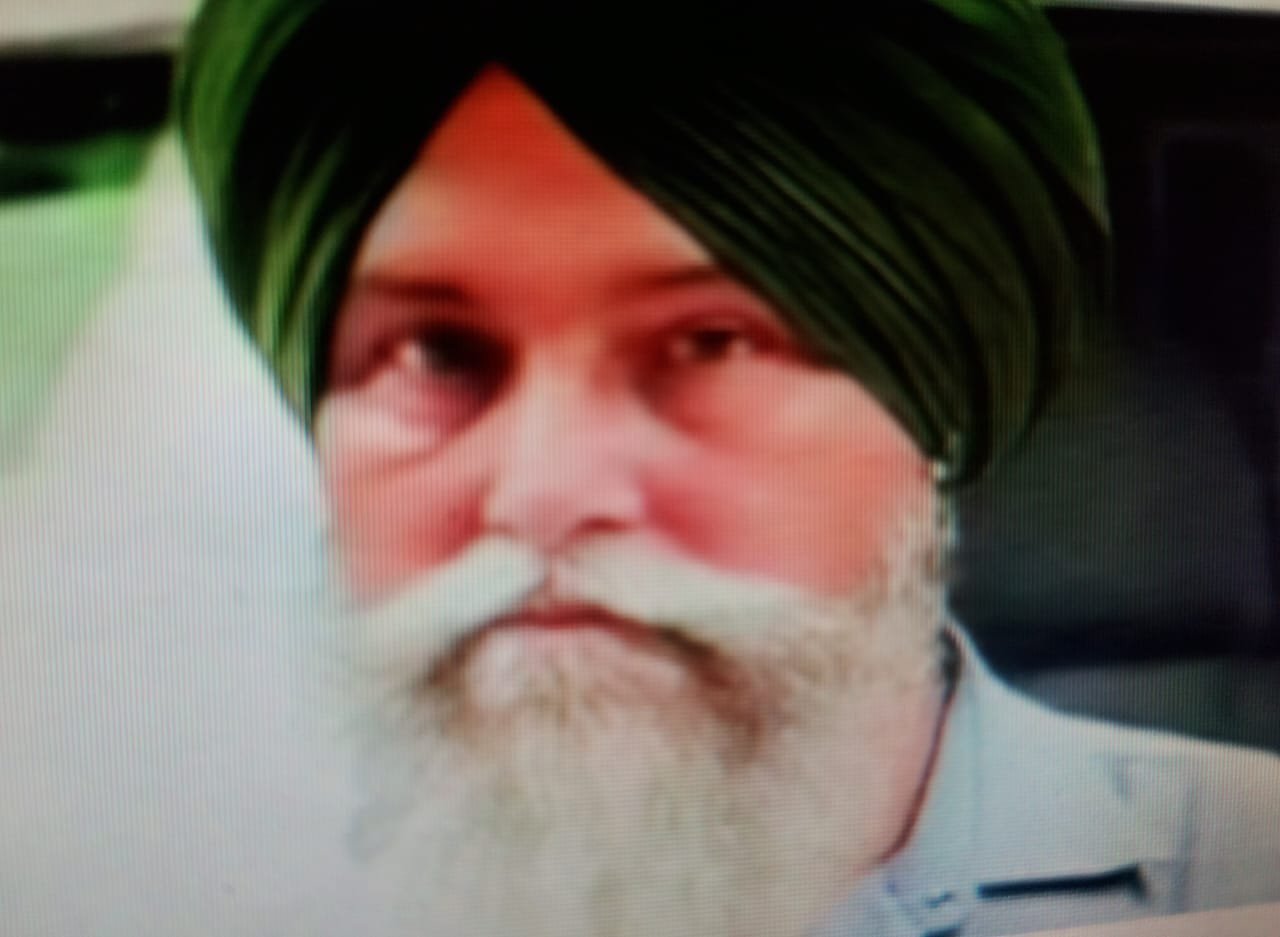
Contents
Lucknow | July 11, 2025
In what could be one of the biggest financial frauds in India’s history, the curtain has finally started to lift. The Uttar Pradesh Economic Offences Wing (EOW) has arrested Gurnam Singh (69) — the key director behind Pearls Agrotech Corporation Ltd (PACL) — from Punjab’s Ropar district.
His crime? Allegedly orchestrating a ₹49,000 crore Ponzi scheme that duped nearly 5 crore investors across India.
This wasn’t just about money. It was about dreams sold and lives broken — mostly belonging to farmers, small shopkeepers, daily wage workers, and middle-class families who trusted PACL with their hard-earned savings.
The Dream That Turned Into a Trap
PACL promised affordable land investments. The plan sounded simple — invest now, and in a few years, you’d either get a valuable land parcel or high returns.
But behind the glittering promises lay a hollow scam.
No land. No returns. Just a web of false paperwork and delayed answers — until one day, even those stopped.
EOW’s New Face — Tough, Accountable, and On a Mission
What’s changed now? The UP EOW has introduced a “Reward and Punish” system to fast-track major financial crime probes like this:
- Monthly performance tracking of officers
- Fast-track teams deployed in every district
- Seizure of properties under Section 111 of the new BNS law
- Helplines, awareness drives, and social media alerts for public support
This new system has already led to 14 arrests, including key names linked to the ₹250 crore V-Care scam and this massive PACL fraud.
This Isn’t Just About Money — It’s About Betrayal
One woman investor said it best:
“We saved for our children’s education, for their future. Now we run around courts and collector offices, with nothing to show for it.”
Behind every number in this scam — there’s a family. A broken promise. A shattered future.
The Bigger Picture
This arrest proves one thing: Justice may be slow, but it’s not blind. ₹49,000 crore didn’t just disappear — it was siphoned off through trust and illusion. The real question now is:
Will India’s legal system bring back justice and money for 5 crore defrauded citizens? Or will this case too fade into the dust of files and forgotten hearings?
India
India Crosses 1.46 Billion — But Why Are People Having Fewer Children? UN Report Reveals the Changing Math of Population

Contents
New Delhi | July11, 2025
There was a time when India’s growing population was considered the country’s biggest problem. Slogans like “Hum Do, Hamare Do” (We Two, Our Two) echoed across walls and radio channels. But times have changed — and so has the narrative.
According to the latest report by the United Nations, India’s population has officially crossed 1.46 billion, making it the most populous nation on the planet. But what’s surprising is this: India’s fertility rate — the number of children a woman has — is steadily declining.
Today, the average Indian woman is giving birth to just two children, which is right around the replacement level needed to maintain a stable population.
So, if fewer children are being born, why is the population still rising? What’s really happening behind these numbers?
This Isn’t Just About Statistics — It’s a Social Shift
There was a time when India was labelled a “population bomb.” Now, several Indian states — including Kerala, Delhi, Tamil Nadu, Karnataka, and Punjab — have fertility rates below replacement level.
This isn’t happening due to force or law — but through education, awareness, and personal choice. It’s a quiet revolution led by society itself.
India is now slowly moving towards population stability, something once thought to be decades away.
Women Are Leading This Change
Behind these shifting numbers is a bigger story — the story of India’s changing women:
- They’re more educated
- They’re joining the workforce
- They’re marrying later
- And they’re making thoughtful, conscious decisions about motherhood
Children are no longer just a tradition — they’re a planned responsibility.
India’s Population Will Peak by 2060 — Then Begin to Decline
Experts say this population growth is the result of demographic momentum — a situation where the current large number of young people continues to reproduce, even as fertility falls.
But once this momentum slows, India’s population will gradually start to decline — marking the beginning of a new era.
That means: the country that is the youngest today may one day become one of the oldest nations in terms of age demographics.
The Real Question Now: What Will We Do With So Many People?
- Can we create enough jobs for all?
- Will our education and healthcare systems be able to handle the pressure?
- And when the population begins to shrink, who will take care of the elderly?
India now needs smart policies, not just to control numbers — but to improve the quality of its population. Because in the long run, it’s not just about how many people we have, but what those people can do.
The Population Game Has Changed
This UN report isn’t just another document filled with stats — it’s a signal that India is entering a new demographic era.
The country is slowly shifting its focus from “how many” to “how capable” — and that’s where real progress begins.
Crime
Shocking Crime in Gurugram: Rising Tennis Star Radhika Yadav Shot Dead — Father Pulls the Trigger Over Career Dispute
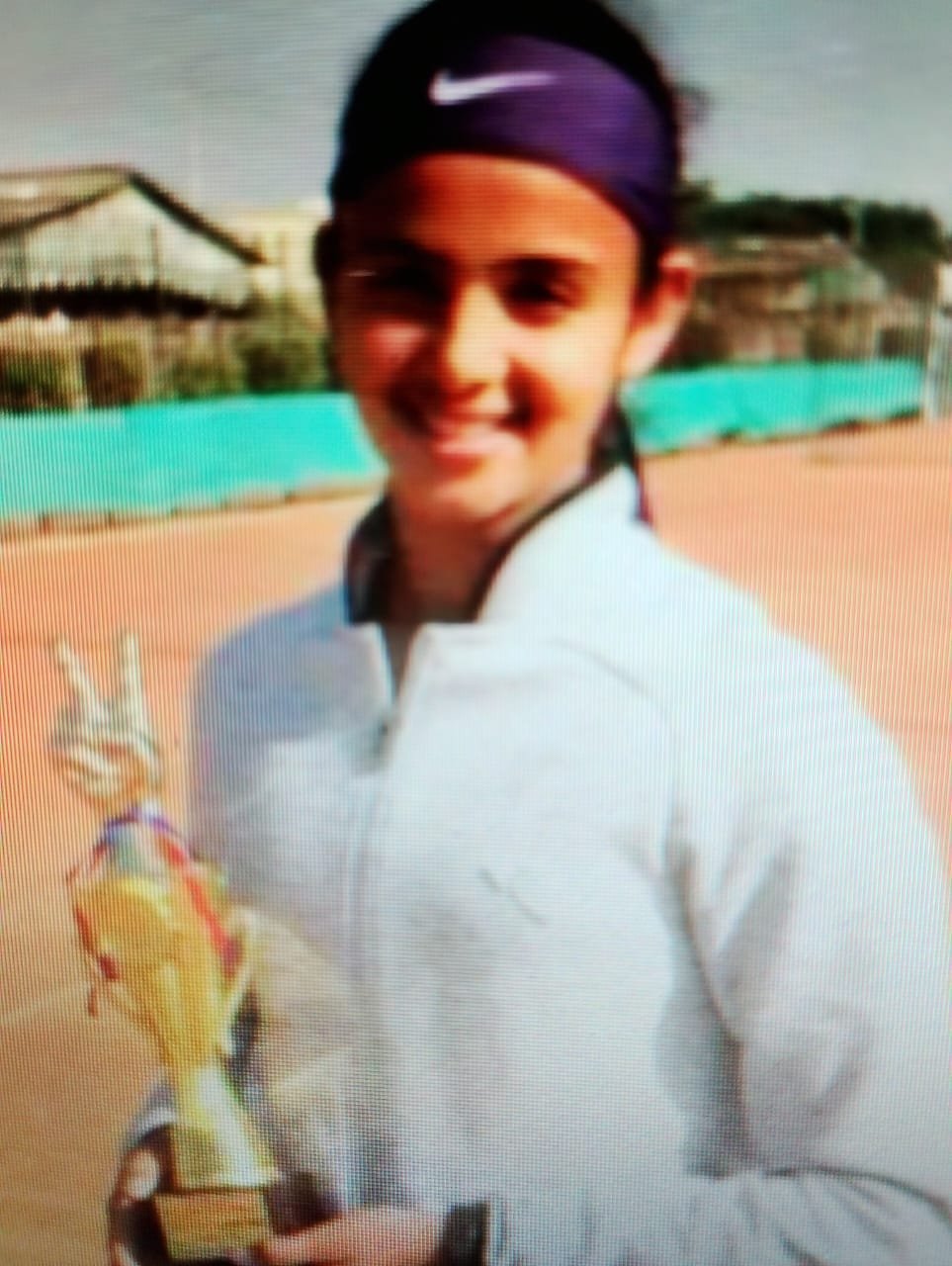
Contents
Gurugram | July 11, 2025
In a deeply disturbing incident that has sent shockwaves across Gurugram, 21-year-old national tennis player Radhika Yadav was shot dead in her own home on Sunday morning. The most heartbreaking detail? The shooter was none other than her own father.
Radhika, who had made a mark at the national level in the past two years and had recently been selected for an international tournament, was the pride of her neighborhood. But her promising journey was cut short not by a stranger, but by someone who was supposed to protect her — her father, Ravindra Yadav.
What led to the tragic shooting?
According to initial police reports, Ravindra Yadav confessed during interrogation that he shot Radhika “in a fit of rage.” Investigators reveal that Radhika was passionate about her tennis career and was preparing to travel abroad for further training and competitions — a plan that reportedly didn’t sit well with her father.
Sources close to the family say Ravindra had always been a strict and conservative man. He was uncomfortable with Radhika’s growing independence and career choices. Tensions had been simmering within the household for months. On Saturday night, a heated argument broke out, and by morning, the unthinkable had happened.
Community in shock
The neighborhood is still reeling from the tragedy. Neighbors describe Radhika as a humble, focused, and highly disciplined young woman.
“She would be out for practice every morning by 5 AM. That kind of dedication is rare these days,” said one neighbor, struggling to hold back tears.
Father arrested on the spot
Police arrested Ravindra Yadav at the scene. He has been charged with murder under relevant sections of the IPC. Radhika’s mother, who was reportedly present in the house during the incident, is in deep shock and under medical observation.
A nation reflects: Are dreams still a crime for daughters?
Radhika’s brutal murder has sparked widespread outrage and grief. It has reignited an uncomfortable question — are daughters still being punished for dreaming big?
When a father turns into the very obstacle his daughter must overcome, it’s a mirror held up to our society.
Latest News
Swiss Accounts, Conversion Racket, and Trapped Innocents — This Wasn’t a Saint, He Was a Predator
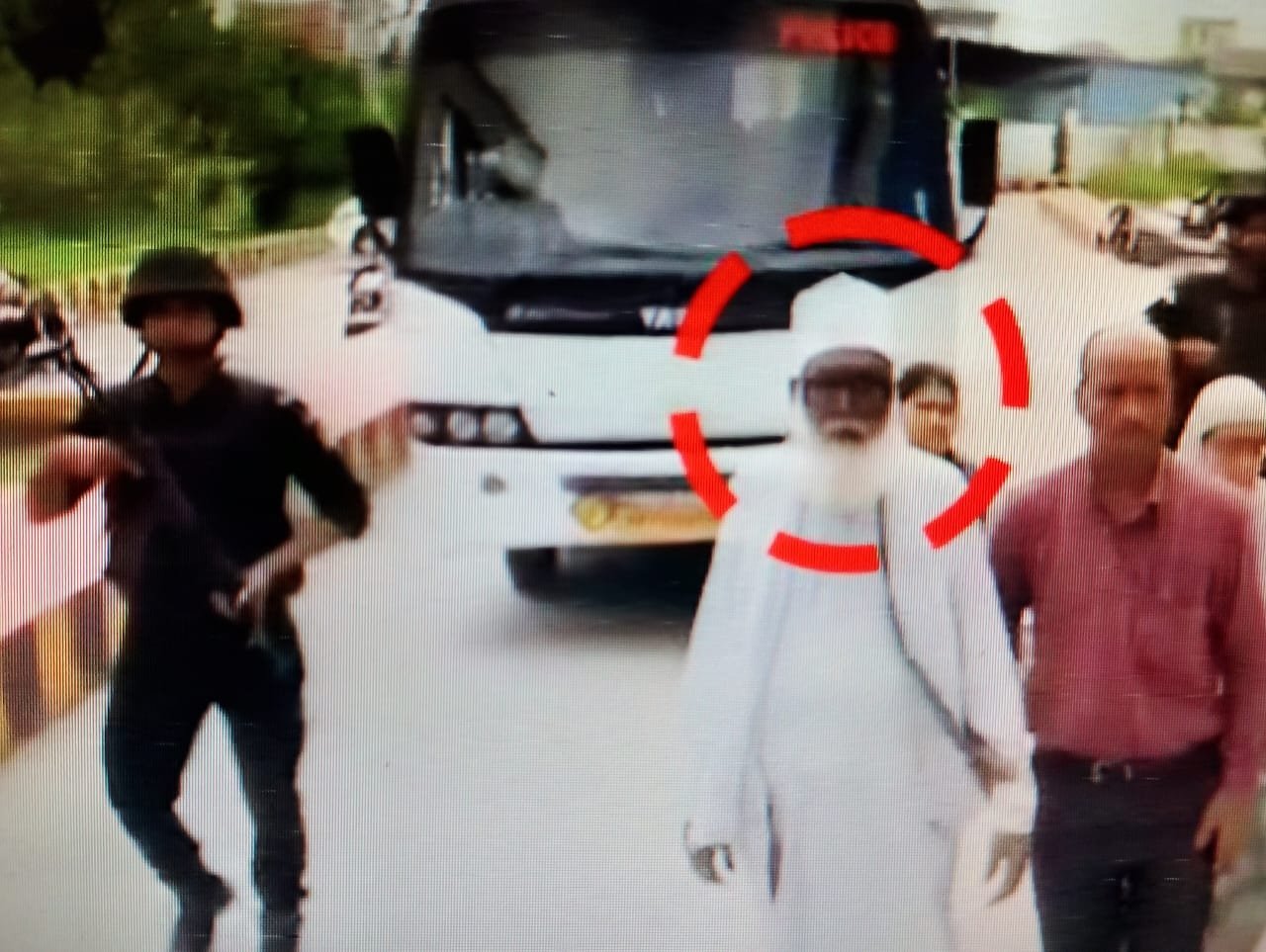
Contents
Uttar Pradesh | 11 July 2025
By Credent TV News Desk
He walked with a staff, wore a long beard, and people in the village folded their hands in reverence at his feet. But behind that saintly image was a man running one of the darkest religious conversion syndicates India has ever seen. His name: Changur Baba. Real name: Jalaluddin. Age: 70. And his list of crimes? Long enough to outlive his age.
A Full-Fledged Conversion Industry
Recent investigations by Uttar Pradesh STF and ATS have uncovered a deeply disturbing reality. This so-called baba wasn’t just chanting prayers — he was masterminding an elaborate system of trapping women and girls into forced religious conversions.
His targets? Minor girls, widows, and poor women — the most vulnerable in society.
His method? Manipulation, emotional blackmail, fake promises of marriage, and when that didn’t work — threats and money.
What’s even more shocking — Baba had a conversion training manual. A complete system of how to trap girls from different religions: what to say, when to act affectionate, and when to threaten.
Fixed rates were decided for each conversion. This wasn’t faith — it was business.
Crores in Swiss Bank Accounts
If you thought this racket was operating on a small scale, think again. Investigators discovered over 40 bank accounts linked to Changur Baba, including several in Switzerland. The total transactions? A staggering ₹106 crore (over $12 million).
Where did the money come from? Sharjah, Dubai, and other Islamic countries, according to the STF.
This was not just a religious racket — it was internationally funded and systematically operated.
Arrested — But the Net Is Wider
On 5th July, STF arrested Changur Baba along with his close aide, Neetu alias Nasreen, from a hotel in Lucknow. During interrogation, it was revealed that the network stretched far — from Mumbai to Dubai.
Now, the Enforcement Directorate (ED) has joined the investigation. A money laundering probe is underway, and authorities are preparing to seize assets and properties linked to the illegal trust and conversions.
A Saint No More
Changur Baba may be behind bars now, but the emotional scars he left on thousands of innocent women can’t be counted in case files or spreadsheets.
He exploited faith to deceive, used trust to destroy, and wore religion as a mask for crime.
As one STF officer said:
“He wasn’t a saint in White. He was a predator in disguise.”
The villagers who once bowed before him now raise questions. How did this go on for so long? And how many more like him are out there?
There’s an old saying:
“When fake saints rise, truth becomes the biggest casualty.”
But this time, the law has spoken. And Baba’s mask has finally fallen.

 Education1 month ago
Education1 month agoKota ICICI Bank Staffer Swindles ₹4.5 Crore, Gambles It All on Stock Market

 Education2 weeks ago
Education2 weeks ago11 Powerful Reasons Why DAV International Yoga Day Jaipur Uplifted Spirits!

 Bollywood1 month ago
Bollywood1 month agoHousefull 5 Movie Review: Akshay Kumar, Riteish Deshmukh Bring Laughter and Twists in Bollywood’s Biggest Comedy Franchise

 Cricket1 month ago
Cricket1 month agoBengaluru Chinnaswamy Stadium Stampede: 11 Dead, 33 Injured in RCB Victory Parade Chaos

 Education2 weeks ago
Education2 weeks ago7 Inspiring Highlights of DAV Foundation Day Jaipur Celebration – Amazing Vedic Legacy Revealed!

 Education2 weeks ago
Education2 weeks agoEmpowering Educators: A Three-Day Learning Journey at DAV Centenary Public School, Jaipur

 Credent TV2 weeks ago
Credent TV2 weeks agoVIBGYOR Summer Camp Ends on a High at DAV Centenary Public School, Jaipur

 Election4 days ago
Election4 days agoDAV Centenary Public School, Vaishali Nagar, Jaipur Event Report: Talent Hunt Show
































